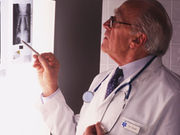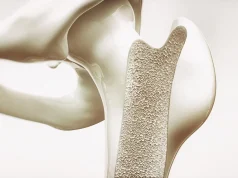EOS measurements show near-perfect correlation to those of CT scanogram in lamb femurs
THURSDAY, Feb. 18, 2016 (HealthDay News) — Low-dose biplanar radiography (EOS) may perform as well as conventional computed tomography (CT) scans in assessing limb length, according to an experimental study published in the January issue of the Journal of Pediatric Orthopaedics.
Matthew R. Garner, M.D., from Columbia University in New York City, and colleagues examined the accuracy and reliability of EOS versus CT scanogram for measurement of leg length. They inserted tantalum beads into the cortex on both the medial and lateral sides of 10 skeletally immature lamb femurs. They obtained CT scanogram and EOS imaging. On two separate occasions, two surgeons recorded measurements of total length and distance between bead pairs on anteroposterior and lateral views.
The researchers observed near-perfect correlation for EOS measurements to those of CT scanogram (P < 0.001). For all measurements with EOS and CT scanogram, intrarater reliability was excellent (both P < 0.001); interrater reliability was also excellent for EOS and CT scanogram (both P < 0.001).
“CT or conventional scanograms are the current gold standard for measuring limb-length discrepancy. However, the use of low-dose EOS is being used more frequently in pediatric orthopedics,” Emily Dodwell, M.D., M.P.H., principal investigator of the study, said in a statement. “The greatest benefit of using these tantalum markers with EOS may be in monitoring growth following injury or surgery to the growth plate. Further investigations are necessary to determine whether this measurement technique will be of significant clinical utility.”
Full Text (subscription or payment may be required)
Copyright © 2016 HealthDay. All rights reserved.








